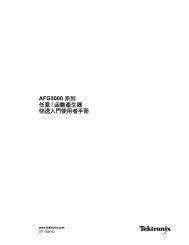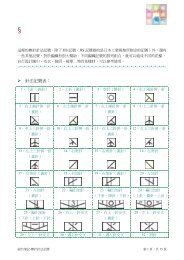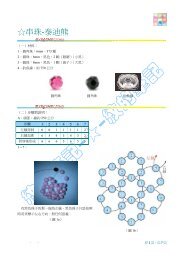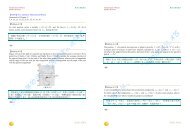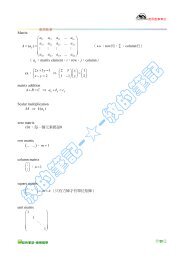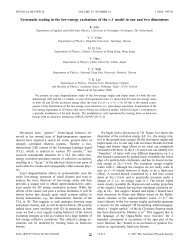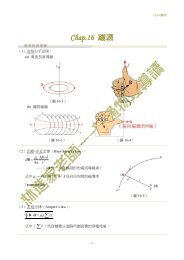Chapter 22 Materials Selection and Design Considerations
Chapter 22 Materials Selection and Design Considerations
Chapter 22 Materials Selection and Design Considerations
Create successful ePaper yourself
Turn your PDF publications into a flip-book with our unique Google optimized e-Paper software.
<strong>22</strong>.7 Introduction • W101<br />
practical matter, one would have to weigh the cost of replacing these 120 engines<br />
against the cost of a spring redesign.<br />
Redesign options would involve taking measures to reduce the shear stresses<br />
on the spring, by altering the parameters in Equations <strong>22</strong>.13 <strong>and</strong> <strong>22</strong>.17. This would<br />
include either (1) increasing the coil diameter D, which would also necessitate<br />
increasing the wire diameter d, or (2) increasing the number of coils Nc. Failure of an Automobile<br />
Rear Axle 3<br />
<strong>22</strong>.7 INTRODUCTION<br />
Subsequent to an accident in which a light pickup truck left the road <strong>and</strong> overturned,<br />
it was noted that one of the rear axles had failed at a point near the wheel<br />
mounting flange. This axle was made of a steel that contained approximately<br />
0.3 wt% C. Furthermore, the other axle was intact <strong>and</strong> did not experience fracture.<br />
An investigation was carried out to determine whether the axle failure caused the<br />
accident or whether the failure occurred as a consequence of the accident.<br />
Figure <strong>22</strong>.11 is a schematic diagram that shows the components of a rear axle assembly<br />
of the type used in this pickup truck. The fracture occurred adjacent to the<br />
bearing lock nut, as noted in this schematic. A photograph of one end of the failed<br />
axle shaft is presented in Figure <strong>22</strong>.12a, <strong>and</strong> Figure <strong>22</strong>.12b is an enlarged view of the<br />
other fractured piece that includes the wheel mounting flange <strong>and</strong> the stub end of the<br />
failed axle. Here (Figure <strong>22</strong>.12b) note that a keyway was present in the area of failure;<br />
furthermore, threads for the lock nut were also situated adjacent to this keyway.<br />
Axle shaft<br />
Gasket<br />
Gasket<br />
Wheel bearing<br />
Wheel bearing retainer<br />
Point of failure<br />
Axle shaft seal<br />
Figure <strong>22</strong>.11 Schematic diagram showing typical components of a light truck axle, <strong>and</strong><br />
the fracture site for the failed axle of this case study. (Reproduced from MOTOR Auto<br />
Repair Manual, 39th Edition © Copyright 1975. By permission of the Hearst Corporation.)<br />
3 This case study was taken from Lawrence Kashar, “Effect of Strain Rate on the Failure<br />
Mode of a Rear Axle,” H<strong>and</strong>book of Case Histories in Failure Analysis, Vol. 1, pp. 74–78,<br />
ASM International, <strong>Materials</strong> Park, OH, 1992.



